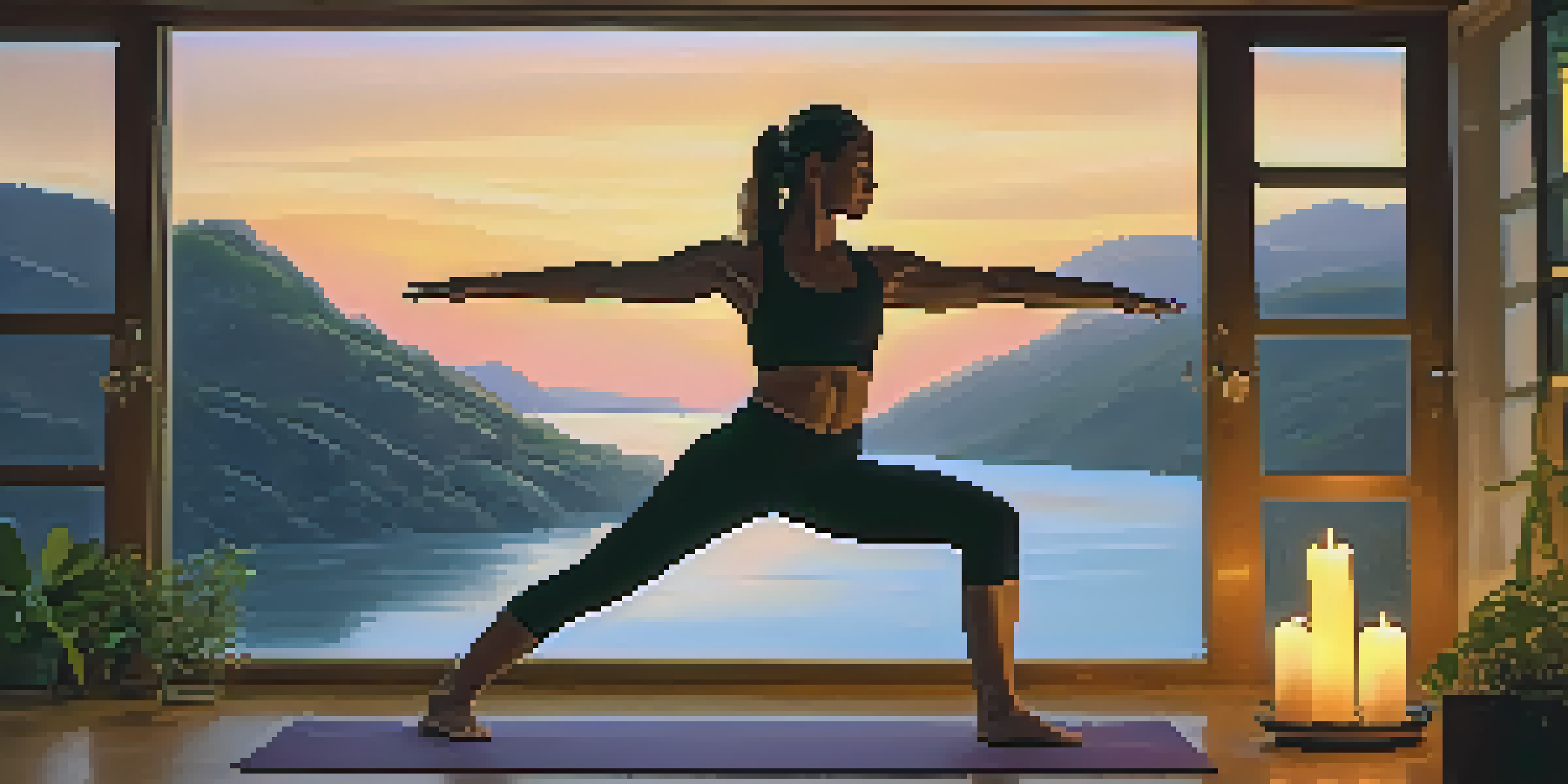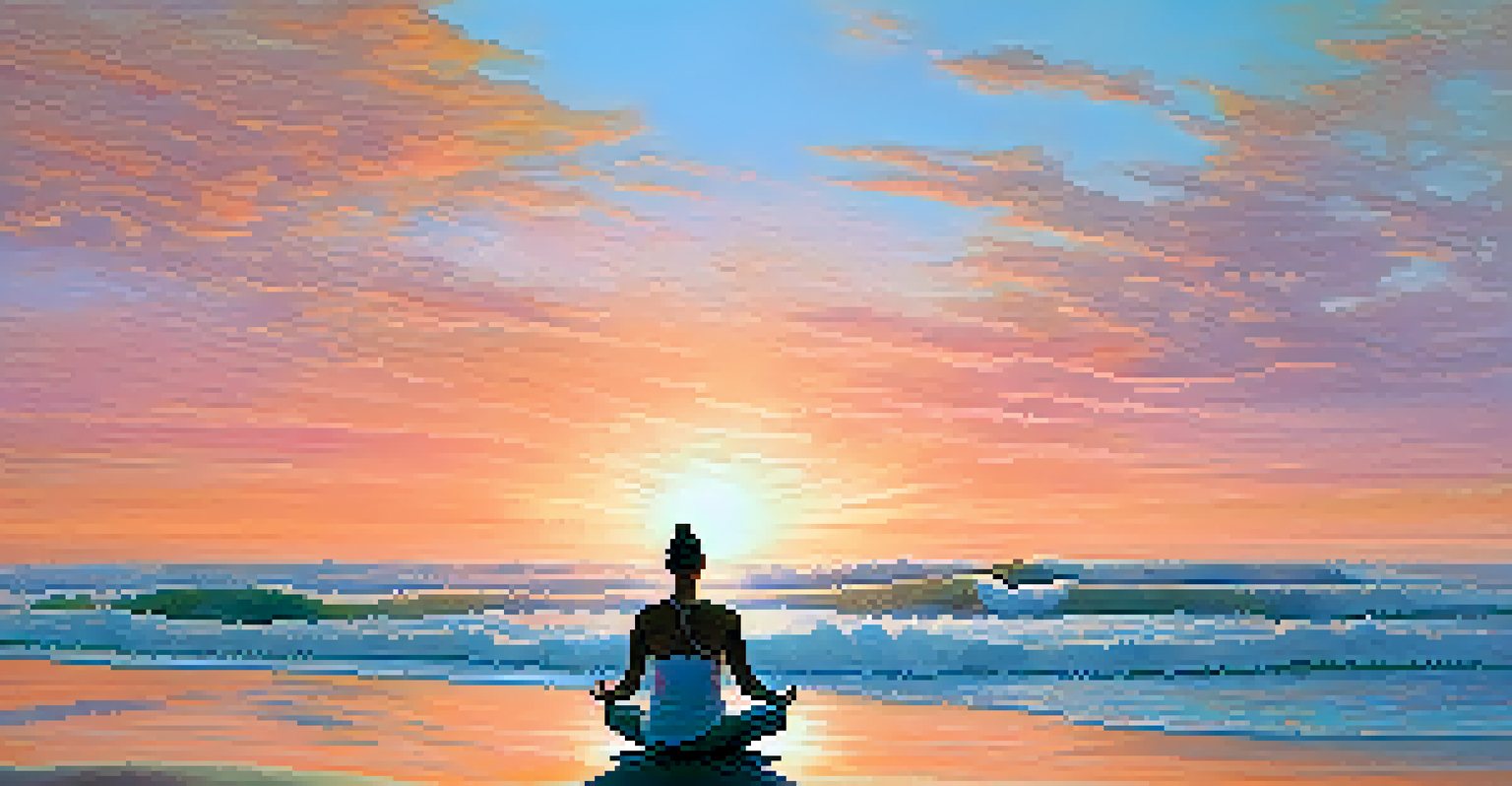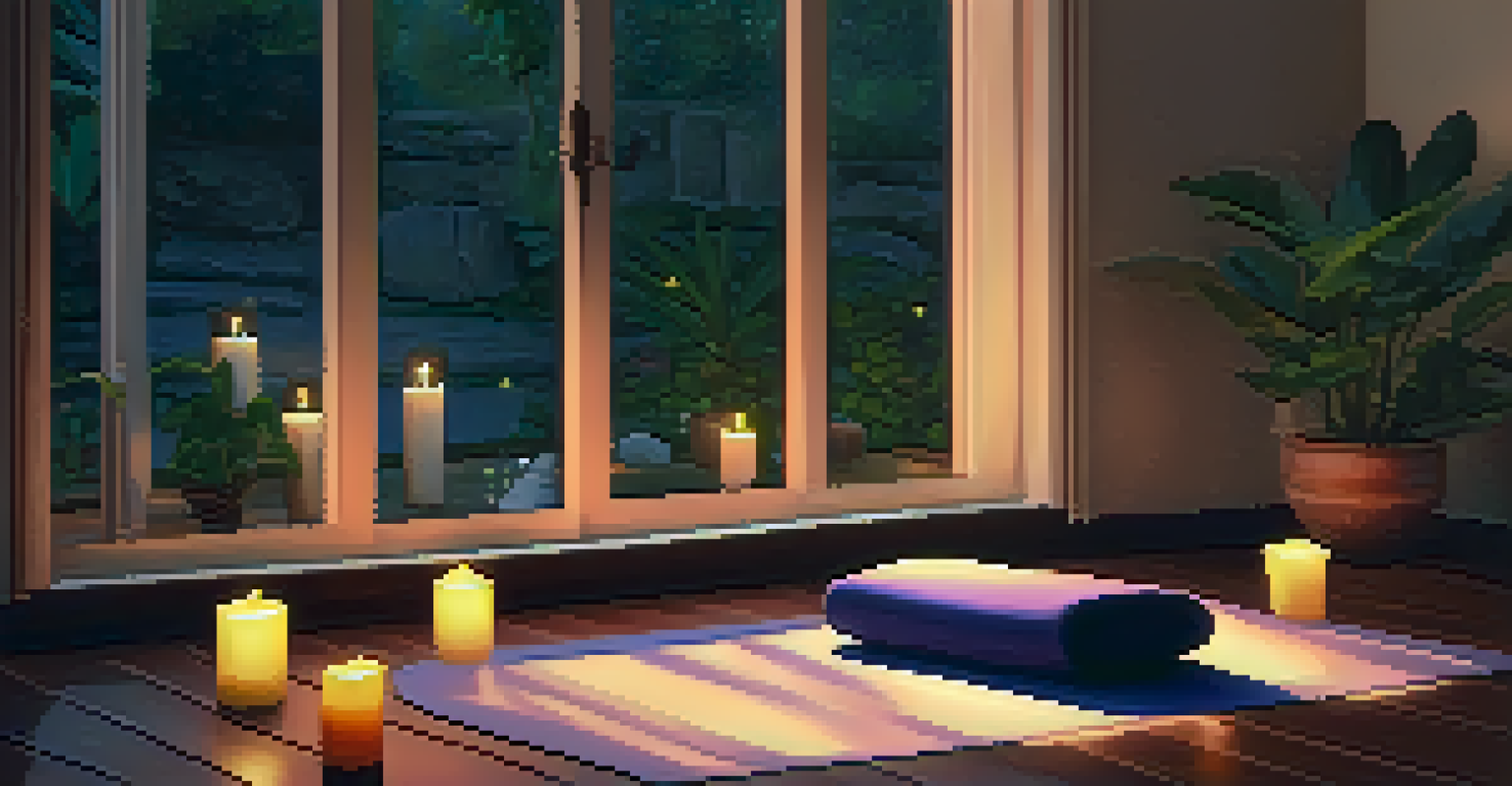Using Guided Imagery in Yoga for Stress and Anxiety Relief

Understanding Guided Imagery and Its Benefits
Guided imagery is a relaxation technique that involves visualizing peaceful scenes or situations to promote mental well-being. It taps into the power of the mind, allowing individuals to create serene mental images that can help reduce stress and anxiety. This technique can be particularly beneficial when integrated into yoga practices, as it enhances the overall experience and fosters a deeper connection with oneself.
The mind is everything. What you think you become.
When you visualize calming landscapes or joyful moments, your body responds by releasing tension and promoting relaxation. This synergy between mind and body is essential for achieving a balanced state, especially in today's fast-paced world. By incorporating guided imagery into yoga, practitioners can experience a more profound sense of peace and clarity.
Moreover, guided imagery can help individuals manage their emotional responses and cope with anxiety. It allows them to create a mental sanctuary that they can return to whenever they feel overwhelmed, reinforcing their ability to handle stress in a healthy way. In essence, it serves as a powerful tool for emotional resilience.
How Guided Imagery Enhances Yoga Practice
In a yoga session, guided imagery can transform a simple practice into a deeply immersive experience. As you move through various poses, visualizations can help you focus your mind, channeling your energy into the present moment. This focused attention not only enhances your physical practice but also calms the mind, making it easier to let go of distractions.

For example, while holding a Warrior pose, you might visualize yourself standing strong on a mountain, feeling the wind against your face. This imagery reinforces your sense of strength and stability, making the pose feel more empowering. Such visualizations can also deepen your breath, enhancing relaxation and further reducing anxiety.
Guided Imagery Reduces Anxiety
This technique helps individuals visualize peaceful scenes, promoting relaxation and emotional resilience.
By coupling yoga with guided imagery, practitioners can access a state of flow where their mind and body work harmoniously. This holistic approach encourages mindfulness, allowing individuals to tune into their bodies and emotions more effectively. Ultimately, it creates a richer yoga experience that nurtures both mental and physical health.
Simple Guided Imagery Techniques to Try in Yoga
There are several straightforward guided imagery techniques you can incorporate into your yoga practice. One effective method is to begin your session with a short visualization. Before you start your poses, take a few moments to close your eyes and imagine a peaceful place, such as a beach or a forest, allowing its tranquility to wash over you.
Yoga is the journey of the self, through the self, to the self.
Another technique is to visualize specific outcomes during your practice. For instance, while doing a challenging pose, picture yourself succeeding and feeling confident. This not only boosts your motivation but also helps to alleviate any anxiety associated with difficult poses, making the practice more enjoyable.
Lastly, you can create a mental mantra or affirmation to repeat while practicing. This could be a phrase like 'I am calm and centered.' Repeating this affirmation during your poses can help reinforce positive feelings and keep your mind focused, enhancing the overall benefits of your yoga practice.
Combining Breathwork with Guided Imagery
Breathwork is a vital component of yoga, and when combined with guided imagery, it can amplify the relaxation effects. Focusing on your breath while visualizing peaceful scenes can create a powerful synergy that calms the nervous system. As you inhale deeply, imagine drawing in positive energy, and as you exhale, visualize releasing stress.
For example, during a seated meditation, you might take a deep breath in while picturing a bright light surrounding you. When you exhale, visualize any negativity or tension leaving your body. This practice not only enhances your focus but also promotes a sense of renewal and calmness.
Enhances Yoga with Visualization
Incorporating guided imagery into yoga creates a more immersive experience, improving focus and mindfulness.
Integrating breathwork with guided imagery can also improve your overall yoga experience. By maintaining awareness of your breath and visualizations, you create a deeper connection between mind and body, leading to a more fulfilling practice. This harmonious combination is especially beneficial for reducing anxiety and fostering relaxation.
Creating a Calm Space for Your Practice
To fully benefit from guided imagery in yoga, it’s essential to create a calm and inviting space. Whether at home or in a studio, ensure that the environment is conducive to relaxation. Dim lighting, soothing scents, and comfortable temperatures can all enhance your ability to focus and visualize effectively.
You might also consider playing soft music or nature sounds in the background, further enriching your sensory experience. These elements help to create a sanctuary where you can immerse yourself in your practice without distractions. When your environment is serene, it’s easier to engage in guided imagery and find that deep sense of peace.
Moreover, personalizing your space with items that inspire tranquility, such as candles or plants, can make your practice feel even more special. This intentional setup can serve as a reminder of your commitment to self-care, making it easier to return to your practice when stress arises.
Real-Life Stories: Benefits of Guided Imagery in Yoga
Many individuals have found remarkable benefits from incorporating guided imagery into their yoga routines. For example, Sarah, a busy professional, struggled with anxiety. After trying guided imagery during her yoga sessions, she noticed a significant reduction in her anxiety levels, allowing her to approach challenges with a clearer mind.
Similarly, John, a beginner yogi, shared how visualizing calming scenes helped him stay focused during challenging poses. By picturing himself in a peaceful forest, he felt more grounded and capable, transforming his practice into a source of joy rather than stress. These personal stories highlight how guided imagery can foster a positive mindset.
Create a Calm Practice Space
A serene environment enhances the effectiveness of guided imagery, making it easier to engage fully in yoga.
These anecdotes serve as a powerful reminder of the potential impact guided imagery can have on individuals' lives. By integrating this technique into yoga, practitioners can cultivate resilience, enhance their mental well-being, and create a more meaningful practice.
Getting Started with Guided Imagery in Your Yoga Journey
If you're interested in exploring guided imagery in your yoga practice, start small. You don't need to overhaul your entire routine; simply adding a few moments of visualization at the beginning or end of your session can be incredibly effective. As you become more comfortable, you can experiment with different techniques to find what resonates with you.
Consider joining a yoga class that incorporates guided imagery or seeking out online resources, such as guided meditations or visualization exercises. These can provide helpful guidance and inspiration as you embark on this journey. Remember, the goal is to create a space where you feel safe and relaxed.

Ultimately, the key is to be patient and open-minded. Like any practice, integrating guided imagery into yoga takes time and experimentation. By allowing yourself the freedom to explore, you’ll likely discover a newfound sense of calm and clarity in your life.